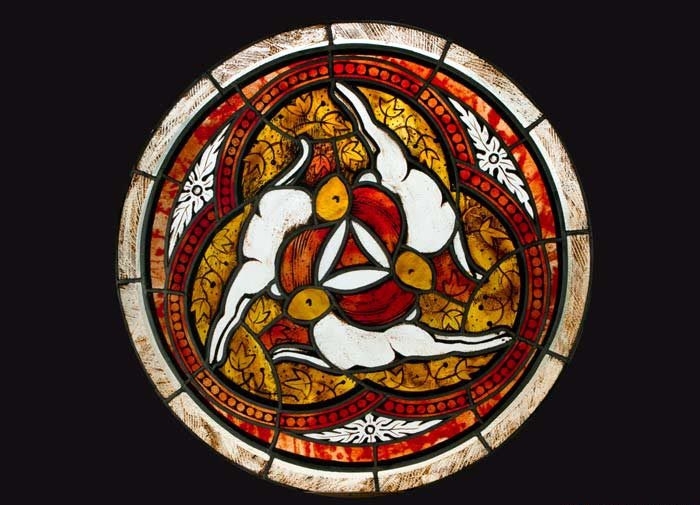Technique originating from the Middle Ages. The small pieces of glass are arranged to form patterns or pictures, held together with soldered lead cames. Glass can be additionaly painted. Classic stained glass is used both in sacred and secular interiors. The most important is the project, that should match the aesthetics of a given interior - either classic or modern.
The stained-glass work consists of three elements - color (the choice of glass), drawing (composition of lead divisions), and painting (not always). The latter is used for extremely detailed parts or gradings, that create painterly effect (folds of the garments, faces). Glass paints are mostly black or brown, their function id to limit the amount of light that passes through the glass. They are made of mineral pigments and enamels. After painting, the glass is fired in high temperatures which makes the color everlasting. Another painting technique consist ofthe use of colored enamels, also kiln-fired, but in slightly lower temperatures.
CLASSIC PAINTED STAINED GLASS
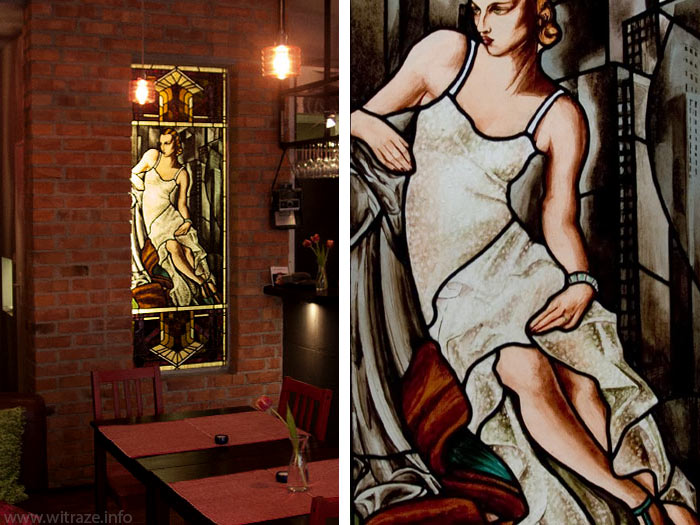
Stained glass panel inspired by Tamara Lempicka's painting.
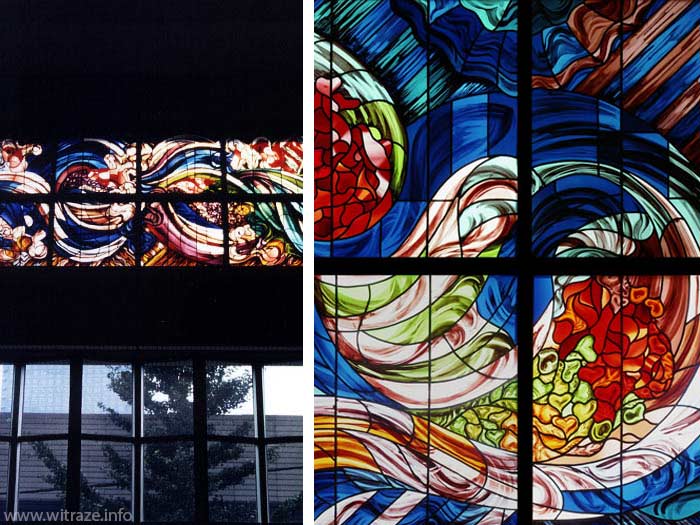
Stained glass windows at the Tokyo School of Commerce
UNPAINTED CLASSIC STAINED GLASS
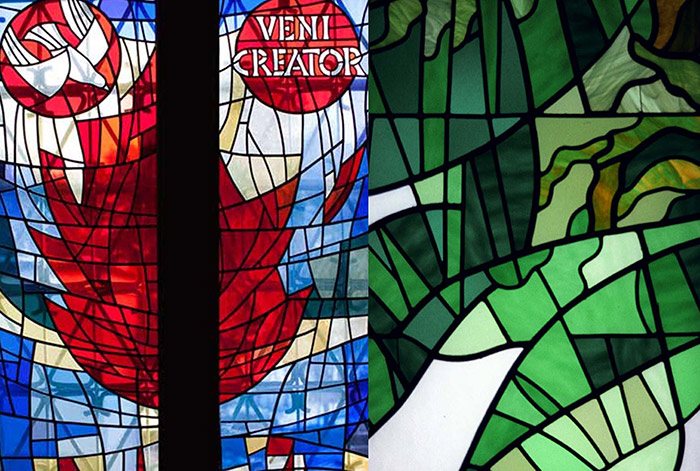
Unpainted stained glass windows (details)
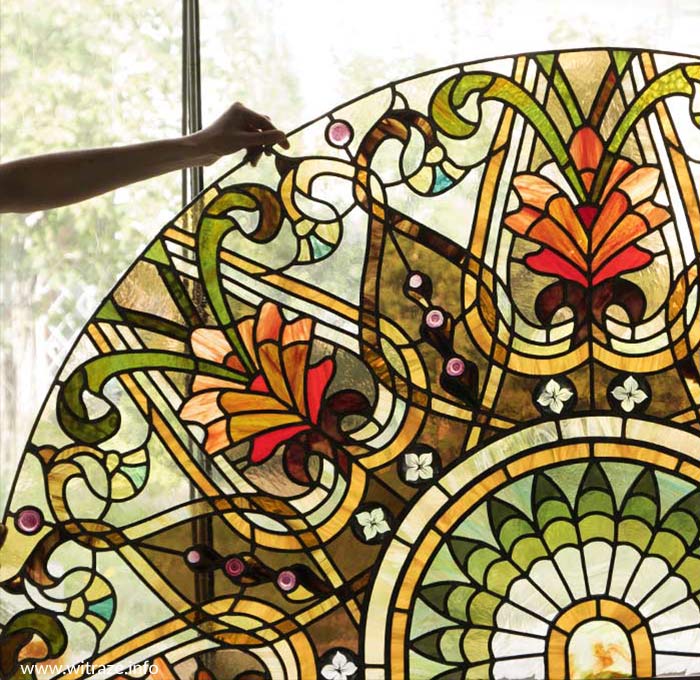
Stained glass rosace, unpainted (excepting few elements - flowers)


